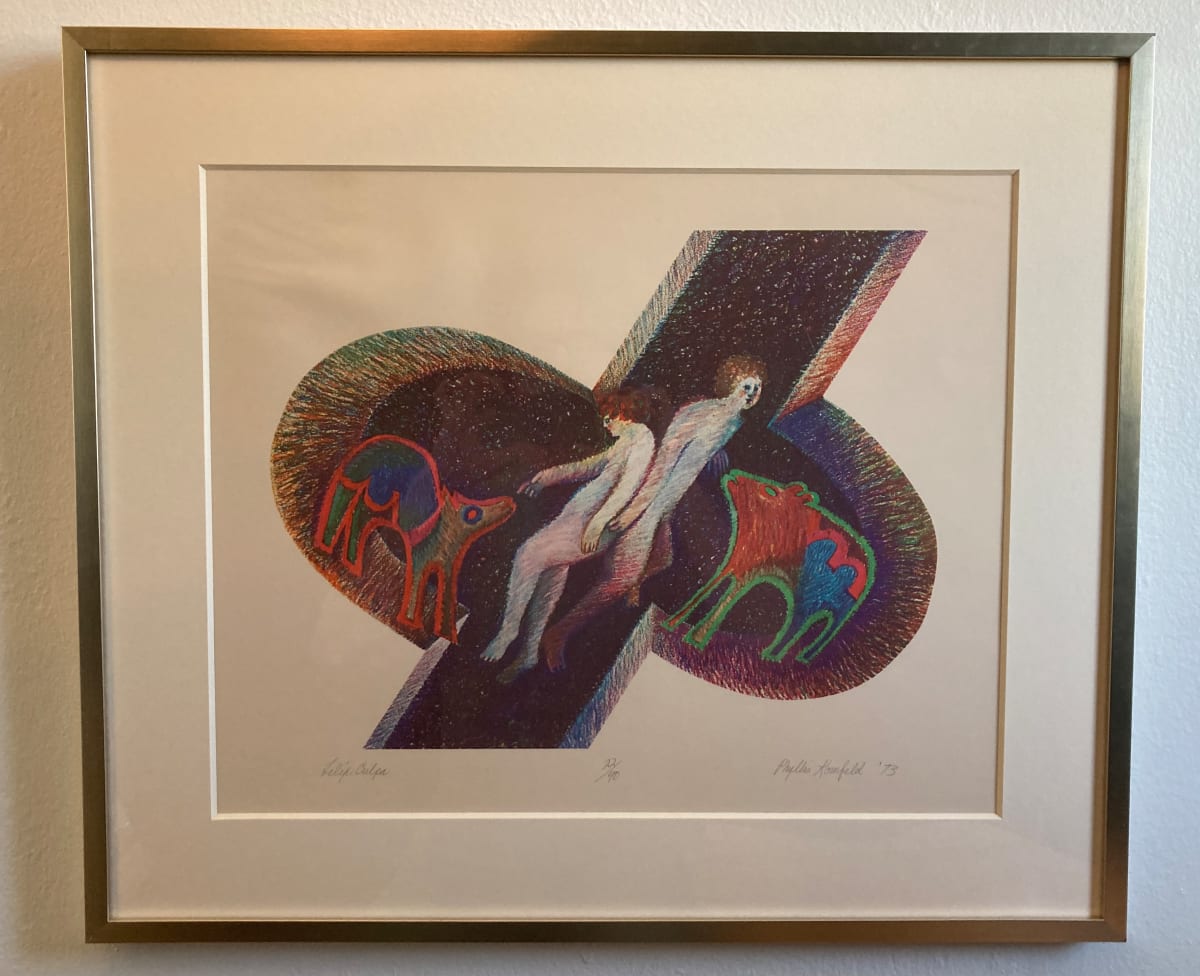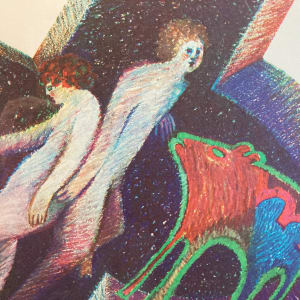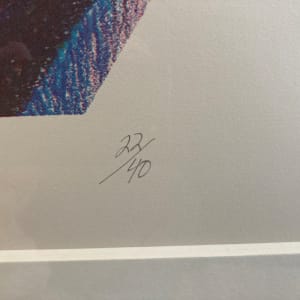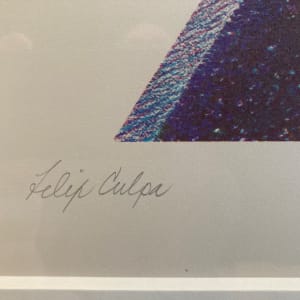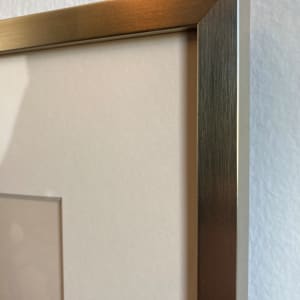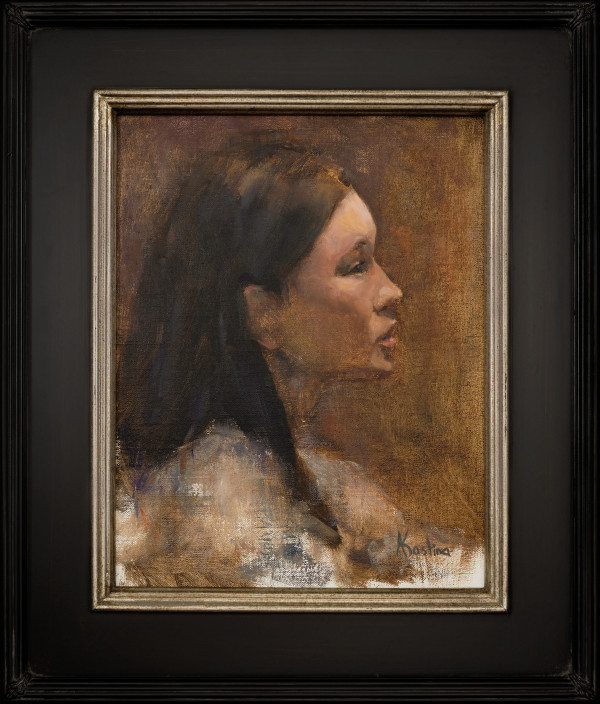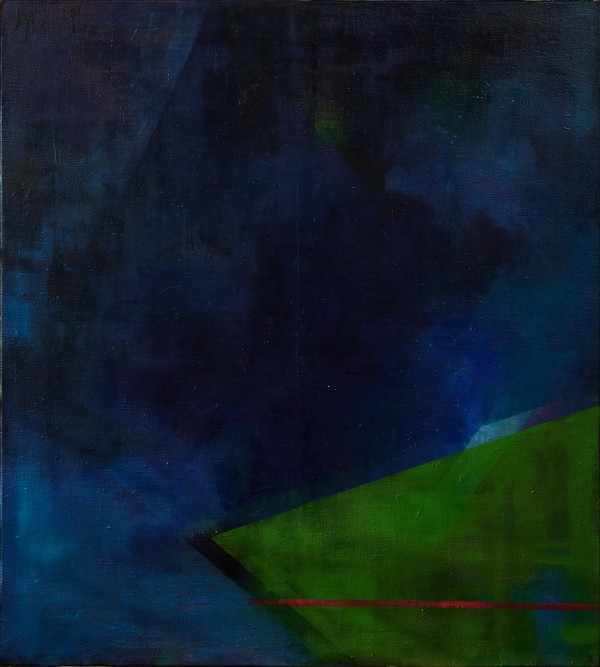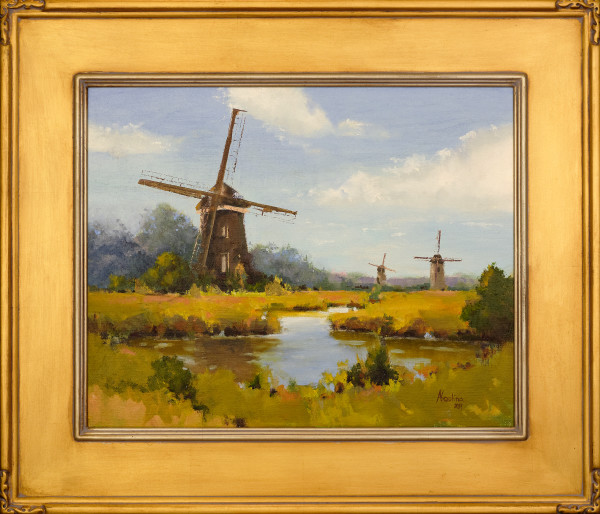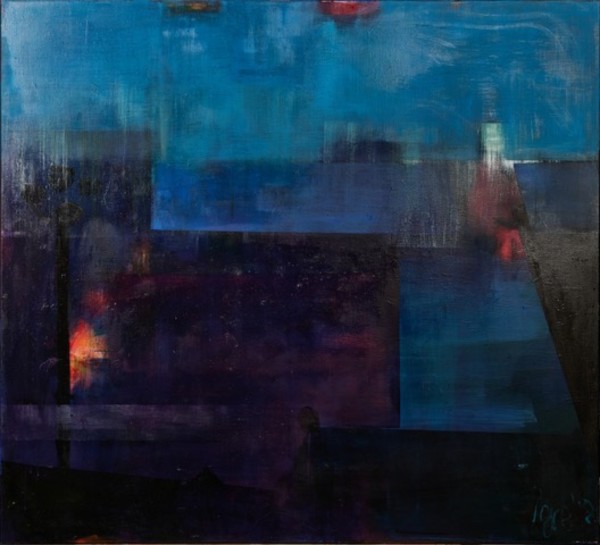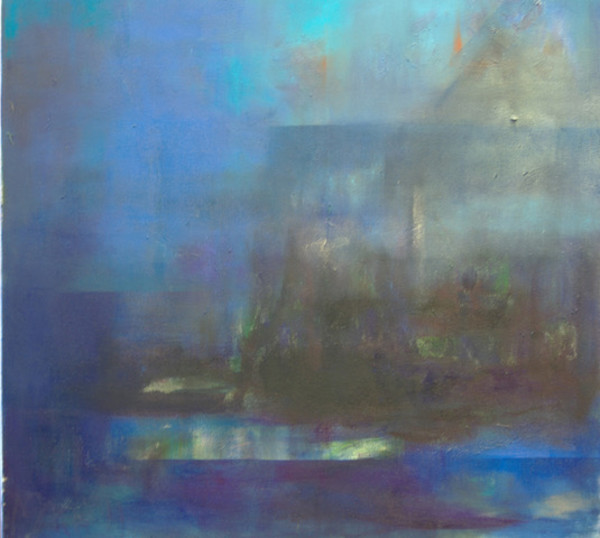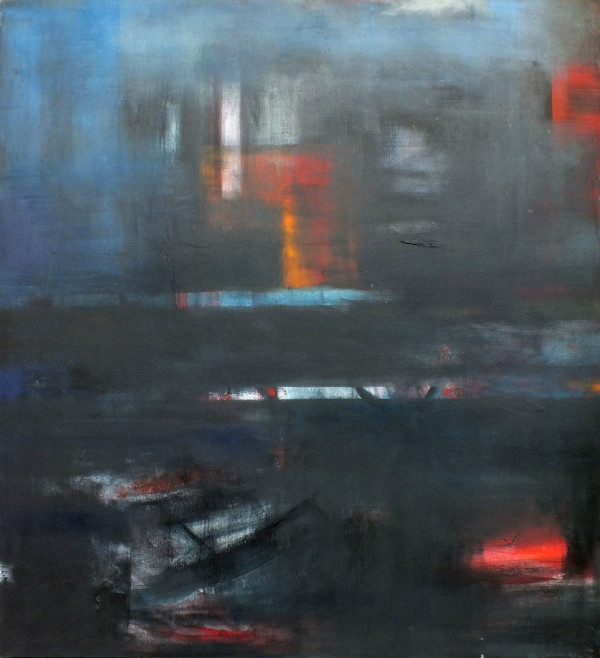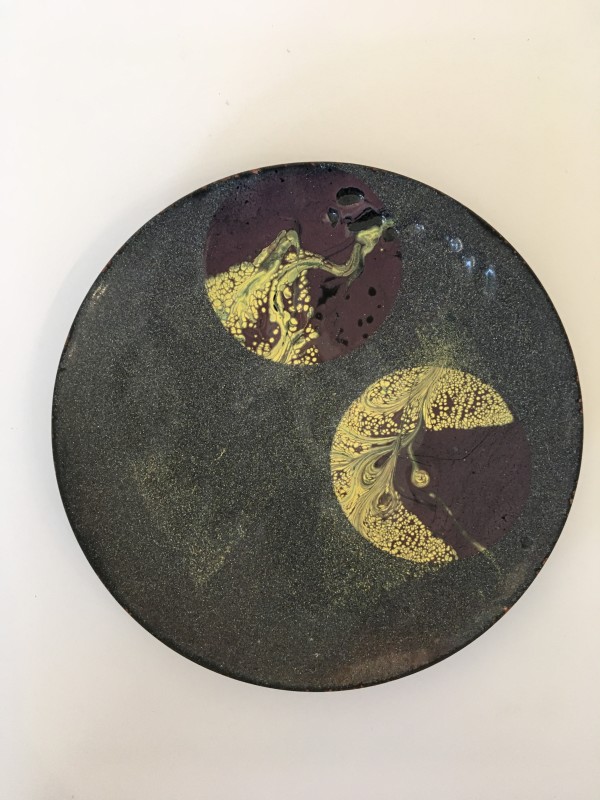- Phyllis Kornfeld
- Felix Culpa, 1973
- Color Lithograph
- 17 x 21 in (43.18 x 53.34 cm)
- Framed: 23.75 x 27.875 x 1 in (60.33 x 70.8 x 2.54 cm)
- Signature notes: In pencil
- Inv: FPhK0001
- $250
This 23.75 inch x 27.875 inch lithograph by Phyllis Kornfeld depicts an abstract rendering of two human figures and two animal figures within an ambiguous setting. The composition consists of a plain white background, a sort of key-hole, 3D rendered shape, and the figures. The key-hole shape could also be described as an X shape, with one line of the X being linear, and the other line of the X being curved, like semi-ovals. The shape is made to appear as if it's a hole or aperture, with shaded edges around the shape, adding to the effect. The shape takes up a good portion of the composition and the white negative space surrounds it. The two human figures seem to float within the opening of the shape, their bodies are rendered with a white color, but shaded lightly with an array of colors that reflect the colors within the shape's edges and the animals by them. The figures are back to back, the one on the right reaches towards the animal thats positioned in front of the figure while the other figure simply looks towards the animal in front of it. Although the figures appear to float within the space, the animals are positioned to where it looks like the are standing on the inner edges of the aperture within the shape. The animals are depicted in a simple manner, somewhat comparable to animalistic renderings seen in petroglyphs. The one on the left is outlined with a vivid red color and is made up of mainly green and blue coloring while the animal on the right is contrasting, outlined with a vivid green color and made up of orange, red, and blue colors. The space that fills the hole that the figures seem to float within, appears to actually be space, as it is black with little white dots that could very well resemble far away stars.
The title 'Felix Culpa,' according to Merriam Webster, is a latin phrase that translates to "fortunate fault —used especially of original sin, which is redeemed by the coming of Christ." However, we are unaware if the artist was intending a specific meaning behind the title.
Phyllis Kornfeld has been passionate about her artistic pursuits since since she was a young girl. After high school, Phyllis attended the University of the Arts in Philadelphia, then called The Philadelphia Museum College of Art, and majored in Art Education. She then received her M.A. in Art Education from the University of Oklahoma. Phyllis taught art in various settings: K -12 to jr. college, experimental public school projects, Golden Age centers, museum classes. In 1983, she applied for a job teaching art to prisoners at three different Oklahoma state penitentiaries: Mabel Bassett Correctional Center for Women (all security levels - minimum to death row) and two medium security prisons for men.
In 1997, Princeton University Press published Phyllis' book 'Cellblock Visions: Prison Art in America,' and she also wrote a chapter for Art Education Beyond the Classroom, (Palgrave MacMillan). She also has acted as curator for various universities and other galleries, such as St. Lawrence University, Albright College, and the University of Scranton, to name a few.
- Collections: "Collected Works From 1515"

